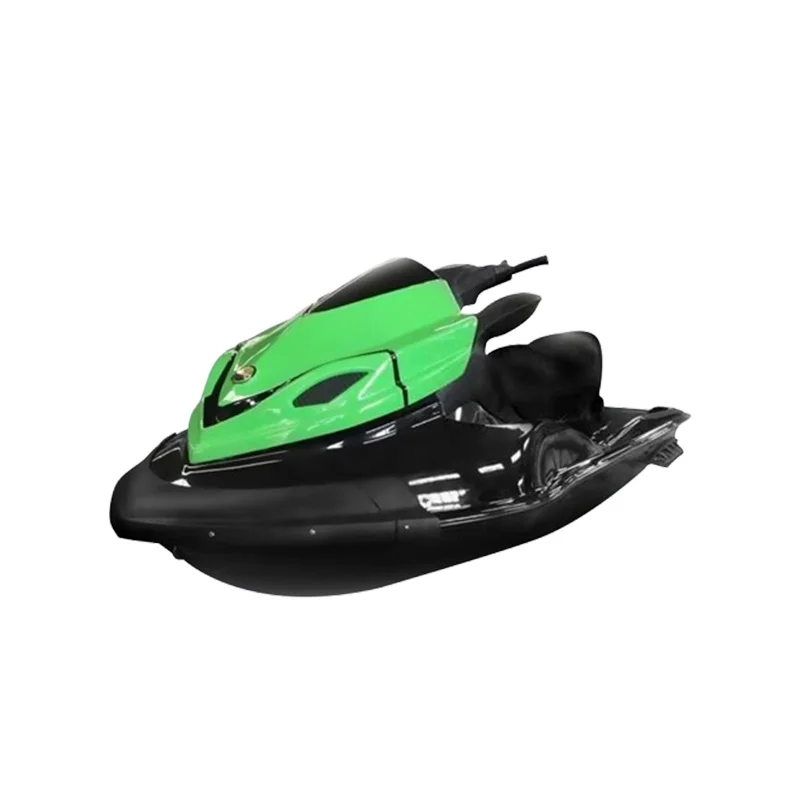- This topic is empty.
-
AuthorPosts
-
05/11/2025 at 15:26 #4883
Evolution of Durable Fiberglass Jet Skis
In the early days of personal watercraft design, lightweight plastics and aluminum dominated the market. However, as riders demanded higher performance and longer-lasting materials, durable fiberglass jet skis emerged as the superior choice. Combining mechanical resilience, hydrodynamic efficiency, and sleek design potential, fiberglass revolutionized how jet skis perform and endure.
Fiberglass jet skis are crafted by layering woven glass fibers with resin to form a reinforced composite shell. This structure is not only impact-resistant but also maintains its form even under extreme stress. Over time, this innovation has made fiberglass the preferred material for both recreational riders and professional racers alike. In this blog post, Hison, a high quality marine recreation products manufacturing factory, will share the features of durable fiberglass jet ski design, its advantages, etc.
Why Fiberglass Makes Jet Skis Exceptionally Durable
When it comes to watercraft exposed to high speeds, saltwater, and constant vibration, durability is not optional—it’s essential. Fiberglass provides a unique combination of strength and flexibility. Its molecular structure distributes impact forces evenly across the hull, minimizing the risk of cracks or deformities.
Unlike metal, fiberglass does not corrode or oxidize in marine environments. This resistance to rust ensures that the fiberglass jet ski hull remains in excellent condition for years, even with frequent saltwater exposure. Additionally, it is relatively lightweight compared to steel or aluminum, allowing for higher speeds without sacrificing control.
The surface finish of fiberglass can also be polished to reduce drag, contributing to better fuel efficiency and smoother acceleration on the water.
Lightweight Power: The Hidden Advantage of Fiberglass Jet Skis
One of the greatest strengths of a fiberglass jet ski lies in its optimal weight-to-strength ratio. The material’s lightness enables faster acceleration, improved maneuverability, and reduced fuel consumption. Riders experience a more agile response when turning or accelerating through waves, offering a dynamic and exhilarating ride.
Manufacturers often use layered fiberglass composites strategically—thicker near impact zones and thinner around the bow—to balance durability and speed. This engineering approach allows a lightweight fiberglass jet ski to outperform heavier counterparts without compromising safety or stability.

Environmental Edge of Durable Fiberglass Construction
In an era where sustainability is a growing priority, fiberglass jet ski manufacturing has adapted to minimize environmental impact. Many manufacturers now use eco-friendly resins and recyclable materials during production. Moreover, fiberglass structures last significantly longer than traditional plastics, reducing waste and replacement cycles.
The extended lifespan of durable fiberglass jet skis translates into fewer discarded hulls and a smaller ecological footprint. Combined with modern fuel-efficient engines, these watercraft reflect a shift toward responsible recreation—balancing thrill with environmental consciousness.
Design Flexibility and Aesthetic Appeal of Fiberglass Jet Skis
Beyond strength, fiberglass offers remarkable design flexibility. Its malleability allows engineers to craft aerodynamic curves and sleek contours that enhance both aesthetics and performance. A custom fiberglass jet ski can be shaped for speed optimization, stability enhancement, or unique visual appeal.
Because fiberglass molds precisely to desired forms, manufacturers can produce jet skis with superior balance and minimal water resistance. This not only boosts handling but also creates opportunities for personalized color finishes and modern styling that appeals to today’s adventurous riders.
Maintenance and Longevity: Keeping a Fiberglass Jet Ski in Prime Condition
Proper maintenance can extend the lifespan of a durable fiberglass jet ski well beyond a decade. Routine care includes rinsing after saltwater use, applying protective wax coatings, and checking for minor surface abrasions. Fortunately, fiberglass is easy to repair—small cracks or chips can be restored using resin kits, restoring the hull’s original strength and shine.
The material’s resilience to UV radiation also helps prevent color fading and surface degradation, ensuring that your jet ski retains its premium look and performance for years. This low-maintenance requirement is one of the key reasons fiberglass dominates in long-term recreational applications.
Comparing Fiberglass Jet Skis to Other Materials
When evaluating materials, fiberglass jet skis consistently outperform those made from ABS plastic or aluminum. Plastic hulls, while affordable, are prone to deformation and cracking under stress. Aluminum, on the other hand, offers good strength but is heavier and susceptible to corrosion over time.
Fiberglass strikes the ideal balance: durable, corrosion-resistant, lightweight, and customizable. It provides smoother rides in rough waters and better shock absorption during high-impact maneuvers, making it a superior long-term investment for marine enthusiasts.
Future of Jet Ski Manufacturing with Fiberglass Innovation
As marine technology continues to advance, the role of fiberglass in jet ski production will only expand. New composite variations—such as carbon-fiber-reinforced fiberglass—are emerging to further increase strength and reduce weight. These innovations promise faster, more energy-efficient watercraft that maintain durability under extreme conditions.
Additionally, smart integration of design software and automated molding systems has made fiberglass jet ski manufacturing more precise and sustainable. Riders can expect future models that deliver higher performance, improved safety, and enhanced environmental compatibility.
Conclusion
From endurance and style to sustainability and performance, durable fiberglass jet skis embody the pinnacle of marine engineering. Their unmatched balance of strength and agility allows them to dominate both leisure and competitive watercraft markets.
For riders seeking a powerful, low-maintenance, and visually stunning machine, fiberglass remains the gold standard. It’s not just about building a jet ski—it’s about crafting a reliable partner for adventure, built to conquer waves and withstand the test of time.
-
AuthorPosts
- You must be logged in to reply to this topic.